#bovington
Text
Also had dinner at this lovely spot…Where TE used to hang out for coffee when he was at Bovington…





16 notes
·
View notes
Text
Südengland / Cornwall 2024 - Tag 12
Ladies and Gentlemen!
Kennt jemand den Offizier Thomas Edward Lawrence? Nein?
Nun, dann vielleicht T.E. Lawrence? Auch nicht?
Aber jetzt klingelt es bestimmt: Lawrence von Arabien?

Oder zumindest den Film? Das Film Epos schlechthin! Ein Werk der Superlative. Eine meisterliche Leistung von Regisseur David Lean in Szene gesetzt, sein partner in crime, Maurice Jarre, steuerte die epochale Filmmusik bei.
Die Rede ist von dem abenteuerlichen Wüstenklassiker „Lawrence von Arabien“ aus dem Jahre 1962. Ein mit Huldigungen überhäufter Meilenstein seines Genres, der nicht weniger als 7 Oscars abräumte. Der Leser ahnt es schon: es ist mein Lieblingsfilm!
Die Handlung ganz, ganz kurz zusammengefasst:
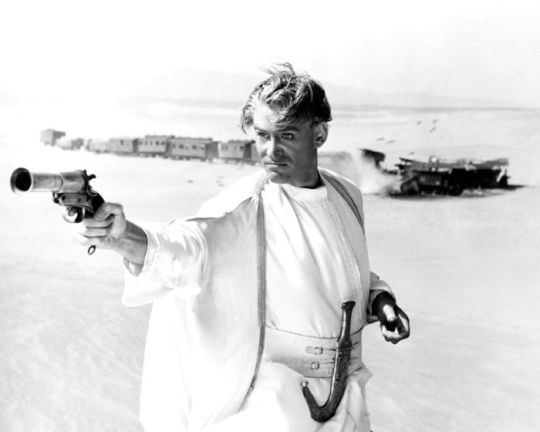
Der britische Offizier Thomas Edward Lawrence (brilliant dargestellt von Peter O’Toole) wird im 1. Weltkrieg, wegen seiner Orient-und Sprachkenntnisse, nach Ägypten versetzt.
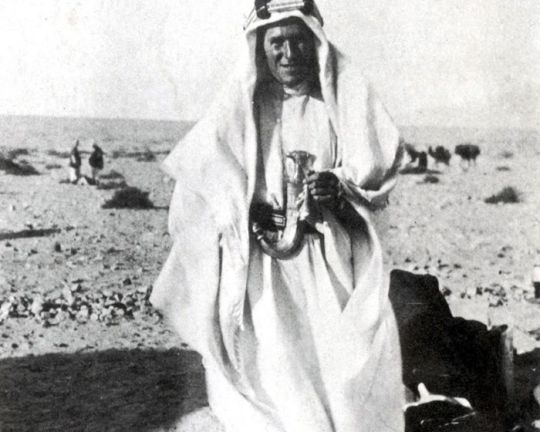
Dort kann der hochintelligenter Grenzgänger das Vertrauen von arabischen Fürsten gewinnen und vereint die beduinisch lebenden Araberstämme. Er zieht mit ihnen in den Kampf gegen die Osmanen (1916 bis 1918). Mit gezielten Guerilla Taktiken und dem sabotieren der Hijaz Eisenbahnlinie, gelangen den Freiheitskämpfern und Wüstenreitern spektakuläre Erfolge.
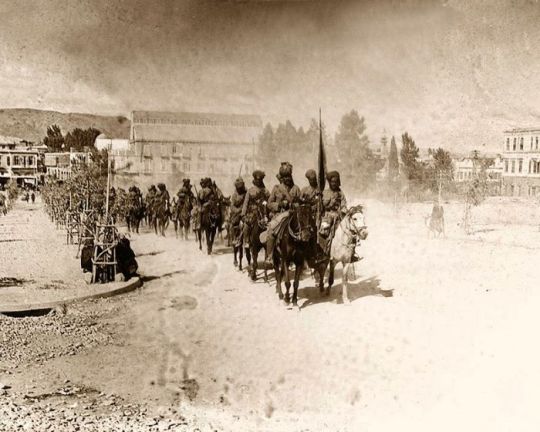
Lawrence steigt in seinem Kampf gegen die Türken zur Legende auf. Das sehen allerdings Briten wie Franzosen äußerst ungern, da sie dadurch ihre eigenen kolonialen Interessen gefährdet sehen. Viele der heutigen Grenzen Afrikas und im Nahen Osten sind das Ergebnis dieser neuen Aufteilung nach 1918.
Falsche Versprechen, das Spiel der Großmächte und der Kampf um Land und Eroberung sollten ihn Zeit seines Lebens begleiten und verfolgen. Der Film beginnt und endet mit dem Tod Thomas Edward Lawrence.

Jetzt fragt sich der geneigte Leser: "Was zur Hölle hat dieses ausschweifende cineastische Geschwafel mit dieser blöden Englandreise zu tun?"
Was der Film nicht mehr zeigt, ist der Zeitraum nach dem 1. Weltkrieg bis zu dem tödlichen Unfall. Diese Zeit spielte weitest gehend hier in Dorset, wo wir uns aktuell befinden.
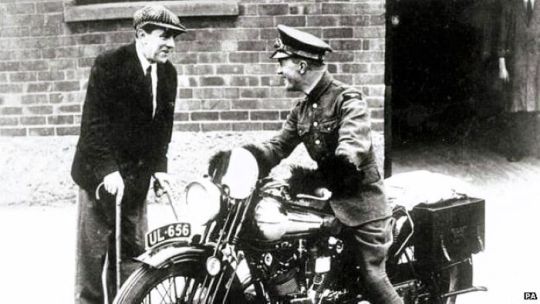
Lawrence selbst trat nach dem Krieg rasch von der Bühne ab und tauchte zunächst im Kolonialministerium unter. 1922 trat er aus dem Kolonialdienst aus.
Er verschenkte sein gesamtes Vermögen und versteckte sich 1923 – vermittelt durch einen Freund im Kriegsministerium, Sir Philip Chetwode – als einfacher Soldat unter dem Pseudonym Thomas Edward Shaw in der britischen Luftwaffe.

Im Januar wurde Lawrence aus der RAF entlassen, nachdem seine wahre Identität von der Presse enttarnt wurde. Im März trat er als Soldat unter dem Pseudonym John Hume Ross in das Panzerkorps in Bovington, Dorset, ein.
Auch im Panzerkorps war Lawrence zutiefst unglücklich. Aufgrund des Drucks seiner Freunde auf die Regierung, die um seine Gesundheit besorgt waren, wurde er 1925 wieder in die RAF aufgenommen, wo er bis zu seiner Verabschiedung im März 1935 diente.

Am Vormittag des 13. Mai 1935, nur wenige Wochen nach dem Ende seiner Dienstzeit, unternimmt der leidenschaftliche Motorradfahrer Lawrence eine Ausfahrt, von seinem Haus "Clouds Hill", in das benachbarte Bovington, um ein Telegramm aufzugeben.
Er fuhr mit seinem Motorrad über eine Landstraße, es war eine Brough Superior SS100, die schnellste Serienmaschine ihrer Zeit. In einer Kurve hinter einer Kuppe tauchen plötzlich zwei Jungs auf Fahrrädern auf.
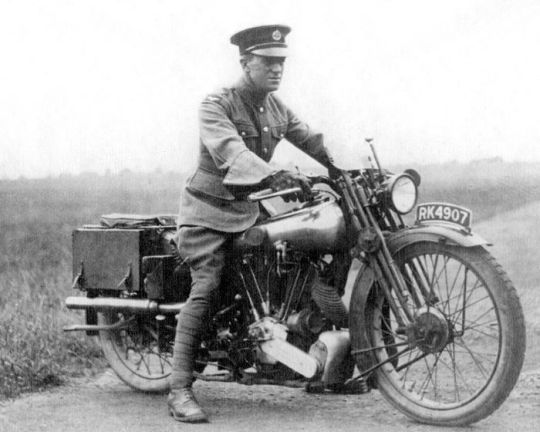
Bei dem Versuch, ihnen auszuweichen, stürzt Lawrence und erleidet schwere Schädelverletzungen. Er lag sechs Tage im Koma und starb am 19. Mai 1935 im Alter von nur 46 Jahren. Er wurde auf dem neuen Friedhof der Kirche von Moreton begraben.
Zu Ehren von Thomas Edward Lawrence hat man n diesem Dreieck den sogenannten Lawrence of Arabia Trail, der die letzten Stationen seines Lebens nachvollzieht, ins Leben gerufen.

Wir parken am Übungsgelände des Panzer Museums von Bovington. Es gibt hier die verschiedensten Informations Tafeln, unter anderem auch zu dem Lawrence Trail.
Direkt an diesem Parkplatz befindet sich eine "Gedenk-Eiche", die Lawrence gewidmet ist.

Am 13. Mai 1983 wurde hier von Tom Beaumont diese Eiche gepflanzt. Er diente mit Lawrence in Arabien. Die Zeremonie der Bepflanzung fand 48 Jahre nach dem Unfall statt, der sich in der Nähe dieser Stelle ereignete.
Die dort angebrachten Erinnerungsplaketten wurden immer wieder gestohlen und so hat man schlussendlich eine steinerne Gedenktafel für ihn errichtet.
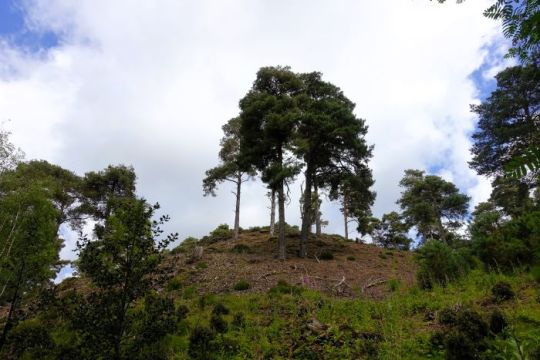
Wir folgen dem öffentlicher Fußweg rechts der Straße, zwischen Waldrand und militärischem Gelände, entlang und kommen direkt bei dem Cottage "Clouds Hill" heraus.
Lawrence mietete ein halb verfallenes Cottage in der Nähe des Bovington Camps – Clouds Hill – das zu seinem Zufluchtsort und später, nach dem Kauf, schließlich zu seinem Zuhause werden sollte.

Früher ein einfaches, winzigen Gutsforsthaus von 1808, zwischen Wäldern und Hügeln in Südengland, wurde Clouds Hill von Lawrence umgestaltet.
In diesem Häuschen, ohne Toilette, ohne Küche und ohne elektrisches Licht, verkroch sich Lawrence vor seinen Dämonen und vor seinem Ruhm. Als Rückzugsort von Lawrence´ Militärleben gekauft, las, schrieb und hörte er hier Musik.
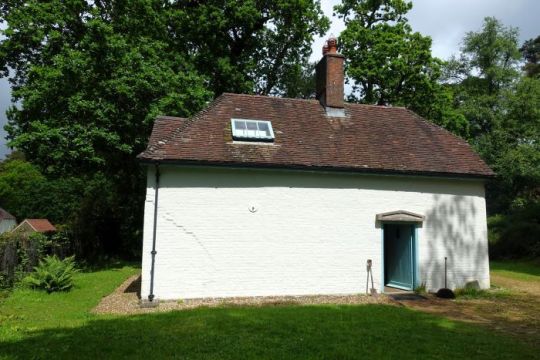
Er wollte nicht der Held sein, der er für viele war und er litt noch jahrelang darunter, dass auch er die Araber verraten hatte, lehnte Orden und Posten ab.
Clouds Hill wurde dem National Trust im Jahr 1937 von Arnold Lawrence, dem älteren Bruder, übergeben. Der National Trust verwaltet das Cottage bis heute.
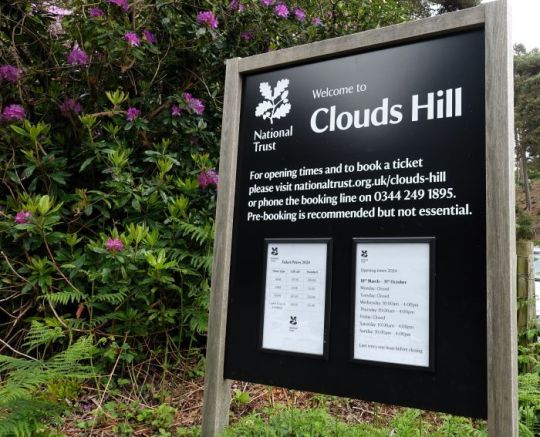
Besucher können hier allerdings nicht einfach herein schneien, auch dann nicht, wenn man Mitglied ist. Eine vorherige Buchung für einen Besuchstermin ist dringend angeraten, die für Mitglieder allerdings kostenfrei ist.
Die Besuchsgruppen werden wegen des sehr begrenzten Platzangebots besonders klein gehalten. Nicht mehr als 8-10 Besucher werden zugelassen.
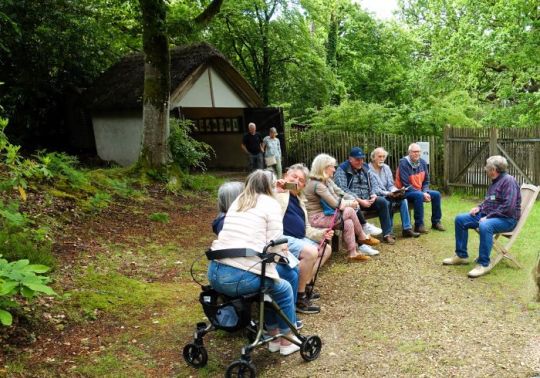
Zunächst gibt es eine historische Einführung in das Leben von T. E. Lawrence. Dabei sitzen alle Interessenten, auf Bänken im Kreis, um einen Historiker des National Trusts herum, während dieser mehr oder weniger ausschweifend für eine gute halbe Stunde doziert. Ein wenig erinnerte uns das Ganze ein wenig an ein Pfadfinderlager.
Anschließend wird die Gruppe noch einmal in zwei Hälften unterteilt und dann geht es mit weiteren Mitarbeitern in das Cottage. Gruppe 1 geht zuerst in das untere Zimmer und Gruppe 2 (also wir) gehen die steile Treppe hinauf, in das obere Zimmer.

Dort erwartet uns ein weiterer, sehr exzentrischer, Mitarbeiter, der uns über weitere Details aus dem Leben Lawrence berichtete. Sein Hauptaugenmerk lag auf den homo-erotischen Begebenheiten (vermutlich auch aus eigenem Interesse). Dies dauert wieder ungefähr eine halbe Stunde.
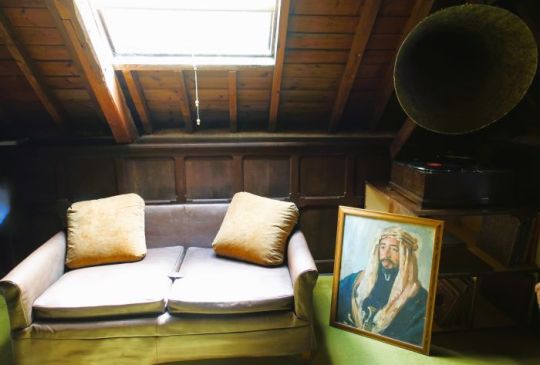
Danach werden die beiden Gruppen gewechselt. Die Unteren nach oben und die Oberen nach Unten. Im unteren Raum befindet sich das Bett und hier las Lawrence in einem eigens für ihn angefertigten Sessel.
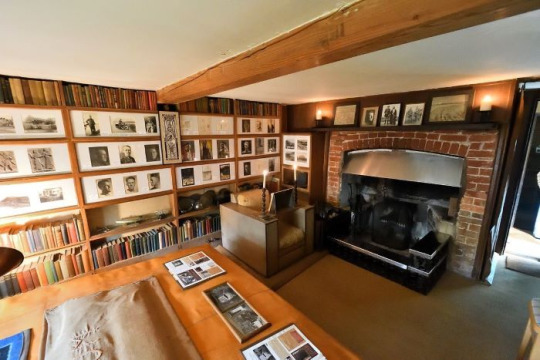
Zusammen mit den verbliebenen Dekorationsstücken und Einrichtungsgegenständen drückt das Cottage bis heute eine ganz besondere Disziplin aus. Das Haus erinnert an den innovativen Geschmack und die vielfältigen intellektuellen Interessen seines einstigen Bewohners.
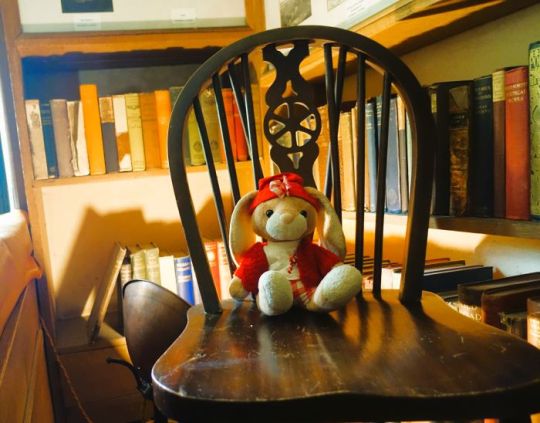
Nach dem Verlassen von Clouds Hill folgt man dem Öffentlicher Fußweg hinter dem Haus, am Waldrand entlang. Man verlässt das Museumsgelände durch die Ausfahrt und hält sich rechts. Wenn die Hauptstraße erreicht ist, überqueren man diese und wendet sich nach links.
Ein paar Meter die Straße hinunter, biegt man links auf den Weg, an dem Holz-Wegweiser Richtung Moreton, ab. Dem Weg folgend, durchqueren man ein Waldgebiet mit alten Laubbäumen und schönen, blühendem Rhododendren im Frühjahr. Diesem Waldweg folgt man für ca. 2 km.

Jenseits der Heide führt der Weg über die Frome-Auen. Die Felder der Aue sind von altem Baumbestand und buschig Hecken gesäumt.
Der Weg führt weiter zu einem Fragment der alten Moore und Heidelandschaft. Die offene Heide ist reich an seltener Dorset Heide.
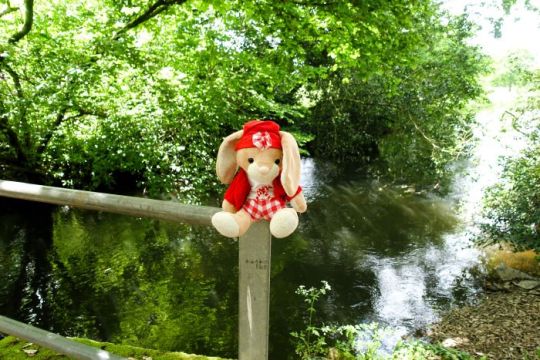
An der T-Kreuzung biegt die Strecke links ab, in Richtung des Frome Fluss und weiter bis nach Moreton. Der Fluss Frome bei Moreton ist ein schönes Beispiel für ein Kreidefluss Habitat.
Nahezu alle Hundehalter der Umgebung scheinen sich hier versammelt zu haben und toben und spielen mit ihren Vierbeinern in der flachen Flussfurt.
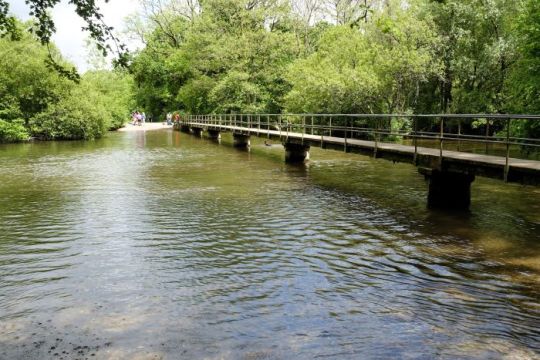
Hat man die Flussbrücke überquert, kommt man in das Dorf Moreton. Links führt ein Weg zur St.-Nikolaus-Kirche, wo Lawrence' Trauerfeier am 21. Mai 1935 statt fand.
An der Beerdigung nahm eine große Menschenmenge teil, darunter Winston Churchill, Schriftsteller und Künstler wie Augustus John, Eric Kennington und Siegfried Sassoon sowie Freunde aus seiner Dienstzeit.
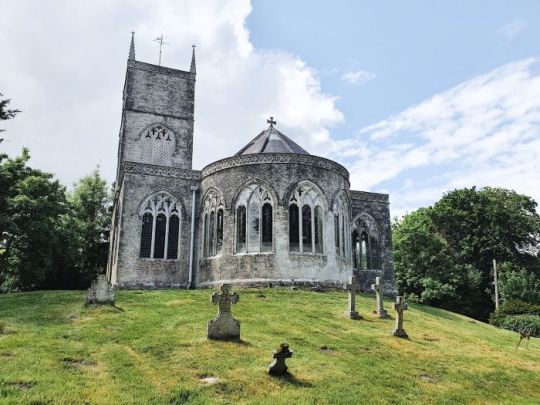
Lawrence´ Trauerfeier wurde durchgeführt von dem Rektor, Kanoniker Michael Kinloch und war weithin abgedeckt durch die Presse, obwohl die Öffentlichkeit gebeten wurde, nicht zu kommen. Sechs speziell ausgewählte Sargträger repräsentierten verschiedene Aspekte von Lawrence´ Leben.
Sein Bruder Arnold war das einzige Familienmitglied, das bei der Beerdigung anwesend war. Lawrences Mutter Sarah und sein Bruder Bob befanden sich auf einer Reise durch China, wo Bob als medizinischer Missionar tätig war, entlang des Jangtse, als sie die Nachricht von seinem Tod erhielten.
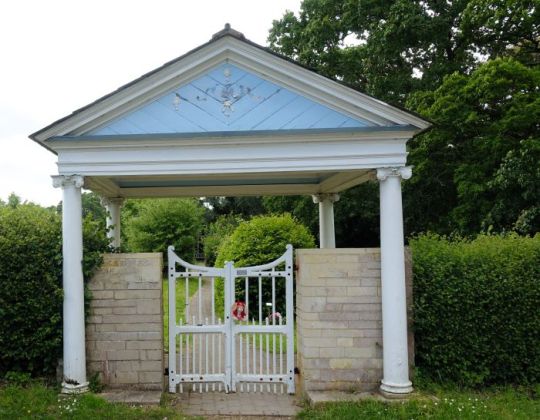
Nach dem Verlassen der Kirche kehrt man ins Dorf zurück und biegt links ab. An der Straße wieder links halten bis zur Kreuzung. Das Tor zum Friedhof ist auf der rechten Straßenseite. Lawrence Grab befindet sich am hinteren Ende, rechts.
Der Grabstein wurde später von seiner Mutter und seinem älteren Bruder Bob ausgewählt. Der Stein trägt das Motto der Universität Oxford: Dominus illuminatio mea (Der Herr ist mein Licht). Zwischen 1907 und 1910 studierte Lawrence Geschichte am Jesus College in Oxford.
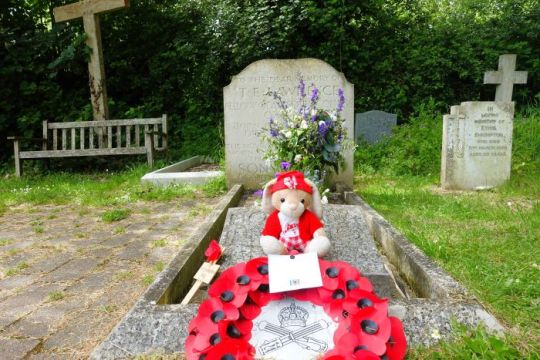
Der Grabstein weist seinen richtigen Namen auf, obwohl er offiziell T. E. Shaw war, als er starb, nachdem er seinen Namen urkundlich geändert hatte.
Wir kehren zu unserem Auto auf dem Parkplatz bei Bovington zurück und biegen an der Kreuzung rechts in die Holt Road ein. Dies ist der Bereich, in dem sich damals das Militärkrankenhaus befand, wo Lawrence starb.

Von dem Tank Museums fahren wir nun in das 12 Kilometer entfernte Städtchen Wareham.
In der St. Martin's Church in Wareham gibt es einen Kenotaph (leeres Grabmal-Denkmal) von Lawrence im Kreuzritterstil. Es zeigt ihn liegend in voller arabischer Kleidung.
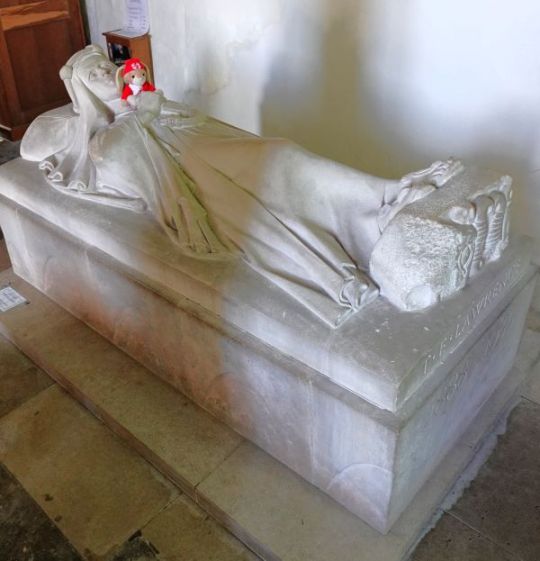
Geschaffen wurde es von seinem Freund, dem Bildhauer und Illustrator Eric Kennington (1888-1960). Dieses Grabmal war ursprünglich für die Londoner St Paul’s Cathedral angefertigt worden.
Aber dort wollte man es als Aufbewahrungsort nicht haben, denn Lawrence stand mit der britischen Regierung über Kreuz. Er hatte seine Ernennung zum "Sir" und mehrere Medaillen abgelehnt, da er die Haltung der Regierung gegenüber den Arabern scharf verurteilte.
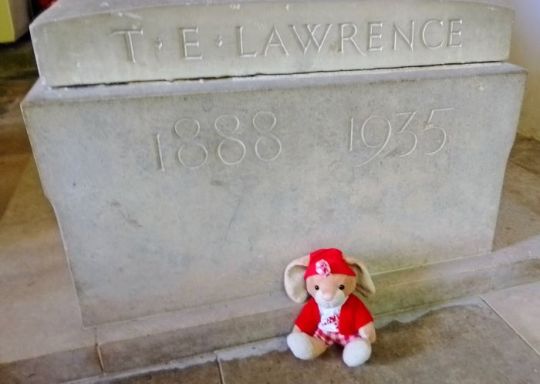
Kenningtons Skulptur wurde als nächstes der Londoner Westminster Abbey angeboten, die aber ebenfalls dankend ablehnte. Wie wäre es denn mit der Kathedrale von Salisbury? "Thank you, no" sagte man auch dort.
So blieb nur noch die kleine, über eintausend Jahre alte Kirche von St Martin’s in Wareham über, die dem steinernen Lawrence bis heute Asyl gewährt.
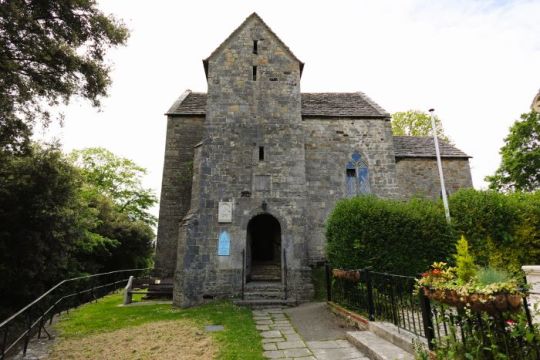
Natürlich gab es auch Verschwörungstheorien, was seinen Tod betraf (waren die britischen Geheimdienste involviert?) Wahrscheinlich ist sein tragischer Unfalltod mit ein Grund, warum der Mythos Lawrence fortbestehen wird.
Für uns ging es nach diesem ereignisreichen, und vor allem geschichtsträchtigen, Tag wieder zurück in unser kleines Cottage auf der Wayland Farm.
Good Night!
Angie, Micha und Mister Bunnybear
8 notes
·
View notes
Text
Are You a Sergeant Oddball or Tank Girl Lookalike?
A curiosity of a centenary-inspired cosplay competition from the Tank Museum, in Dorset...

View On WordPress
#Alan Martin#Bovington#Donald Sutherland#downthetubes News#Events#Humour Comics#Jamie Hewlett#Kelly&039;s Heroes#Sergeant Oddball#Tank Girl#Tank Museum#War Comics
3 notes
·
View notes
Text

Panzerjäger Tiger Ausf. B Jagdtiger

Panzerkampwagen - VI - Tiger (ez a Tigris volt a Furyban)

M4A2 (76W) HVSS Sherman -- a Fury
1 note
·
View note
Photo

Light Tank (Airborne) M22, ou désigné M22 Locust par les britanniques – Bovington Tank Museum – Angleterre – Janvier 2007
©Photo de Max Smith
#WWII#Char#Tanks#Char léger#Light tank#M22 Locust#Bovington Tank Museum#Angleterre#England#01/2007#2007
25 notes
·
View notes
Note
Trick or Treat? 🦇
Trick.
Have this:

Jasmine and Marc cosplaying as characters from my childhood favorite anime (Toradora!).
#writers of tumblr#my art#artists of tumblr#old art#my ask#asks#talesofsorrowandofruin#my ocs#jasmine#jasmine bovington#jas#marc#marcus bovington
3 notes
·
View notes
Photo


This year’s tank museum Christmas gifts and also Winston got a hat (not from the tank museum)
16 notes
·
View notes
Text
Oooh! A great Gavin Finney (Good Omens Director of Photography) interview with Helen Parkinson for the British Cinematographer! :)
HEAVEN SENT
Gifted a vast creative landscape from two of fantasy’s foremost authors to play with, Gavin Finney BSC reveals how he crafted the otherworldly visuals for Good Omens 2.
It started with a letter from beyond the grave. Following fantasy maestro Sir Terry Pratchett’s untimely death in 2015, Neil Gaiman decided he wouldn’t adapt their co-authored 1990 novel, Good Omens, without his collaborator. That was, until he was presented with a posthumous missive from Pratchett asking him to do just that.
For Gaiman, it was a request that proved impossible to decline: he brought Good Omens season one to the screen in 2019, a careful homage to its source material. His writing, complemented by some inspired casting – David Tennant plays the irrepressible demon Crowley, alongside Michael Sheen as angel-slash-bookseller Aziraphale – and award-nominated visuals from Gavin Finney BSC, proved a potent combination for Prime Video viewers.
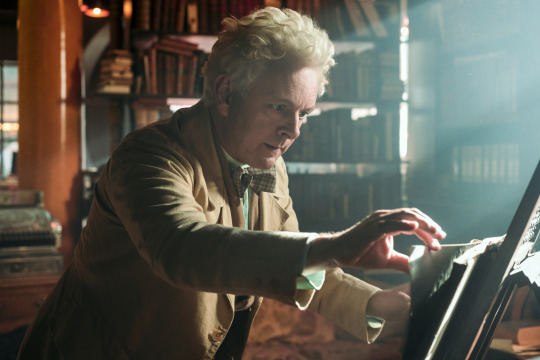
Aziraphale’s bookshop was a set design triumph.
Season two departs from the faithful literary adaptation of its predecessor, instead imagining what comes next for Crowley and Aziraphale. Its storyline is built off a conversation that Pratchett and Gaiman shared during a jetlagged stay in Seattle for the 1989 World Fantasy Convention. Gaiman remembers: “The idea was always that we would tell the story that Terry and I came up with in 1989 in Seattle, but that we would do that in our own time and in our own way. So, once Good Omens (S1) was done, all I knew was that I really, really wanted to tell the rest of the story.”
Telling that story visually may sound daunting, but cinematographer Finney is no stranger to the wonderfully idiosyncratic world of Pratchett and co. As well as lensing Good Omens’ first outing, he’s also shot three other Pratchett stories – TV mini series Hogfather (2006), and TV mini-series The Colour of Magic (2008) and Going Postal (2010).
He relishes how the authors provide a vast creative landscape for him to riff off. “The great thing about Pratchett and Gaiman is that there’s no limit to what you can do creatively – everything is up for grabs,” he muses. “When we did the first Pratchett films and the first Good Omens, you couldn’t start by saying, ‘Okay, what should this look like?’, because nothing looks like Pratchett’s world. So, you’re starting from scratch, with no references, and that starting point can be anything you want it to be.”

Season two saw the introduction of inside-outside sets for key locations including Aziraphale’s bookshop.
From start to finish
The sole DP on the six-episode season, Finney was pleased to team up again with returning director Douglas Mackinnon for the “immensely complicated” shoot, and the pair began eight weeks of prep in summer 2021. A big change was the production shifting the main soho set from Bovington airfield, near London, up to Edinburgh’s Pyramids Studio. Much of the action in Good Omens takes place on the Soho street that’s home to Aziraphale’s bookshop, which was built as an exterior set on the former airfield for season one. Season two, however, saw the introduction of inside-outside sets for key locations including the bookshop, record store and pub, to minimise reliance on green screen.
Finney brought over many elements of his season one lensing, especially Mackinnon’s emphasis on keeping the camera moving, which involved lots of prep and testing. “We had a full-time Scorpio 45’ for the whole shoot (run by key grip Tim Critchell and his team), two Steadicam operators (A camera – Ed Clark and B camera Martin Newstead) all the way through, and in any one day we’d often go from Steadicam, to crane, to dolly and back again,” he says. “The camera is moving all the time, but it’s always driven by the story.”
One key difference for season two, however, was the move to large-format visuals. Finney tested three large-format cameras and the winner was the Alexa LF (assisted by the Mini LF where conditions required), thanks to its look and flexibility.
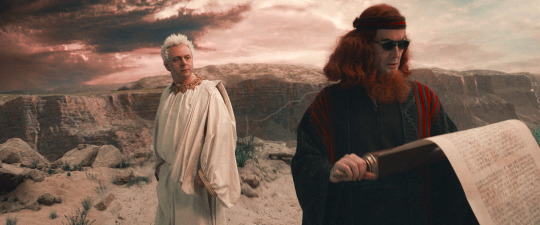
The minisodes were shot on Cooke anamorphics, giving Finney the ideal balance of anamorphic-style glares and characteristics without too much veiling flare.
A more complex decision was finding the right lenses for the job. “You hear about all these whizzy new lenses that are re-barrelled ancient Russian glass, but I needed at least two full sets for the main unit, then another set for the second unit, then maybe another set again for the VFX unit,” Finney explains. “If you only have one set of this exotic glass, it’s no good for the show.”
He tested a vast array of lenses before settling on Zeiss Supremes, supplied by rental house Media Dog. These ticked all the boxes for the project: “They had a really nice look – they’re a modern design but not over sharp, which can look a bit electronic and a bit much, especially with faces. When you’re dealing with a lot of wigs and prosthetics, we didn’t want to go that sharp. The Supremes had a very nice colour palette and nice roll-off. They’re also much smaller than a lot of large-format glass, so that made it easy for Steadicam and remote cranes. They also provided additional metadata, which was very useful for the VFX department (VFX services were provided by Milk VFX).”
The Supremes were paired with a selection of filters to characterise the show’s varied locations and characters. For example, Tiffen Bronze Glimmerglass were paired with bookshop scenes; Black Pro-Mist was used for Hell; and Black Diffusion FX for Crowley’s present-day storyline.

Finney worked closely with the show’s DIT, Donald MacSween, and colourist, Gareth Spensley, to develop the look for the minisode.
Maximising minisodes
Episodes two, three and four of season two each contain a ‘minisode’ – an extended flashback set in Biblical times, 1820s Edinburgh and wartime London respectively. “Douglas wanted the minisodes to have very strong identities and look as different from the present day as possible, so we’d instantly know we were in a minisode and not the present day,” Finney explains.
One way to shape their distinctive look was through using Cooke anamorphic lenses. As Finney notes: “The Cookes had the right balance of controllable, anamorphic-style flares and characteristics without having so much veiling flare that they would be hard to use on green screens. They just struck the right balance of aesthetics, VFX requirements and availability.” The show adopted the anamorphic aspect ratio (2:39.1), an unusual move for a comedy, but one which offered them more interesting framing opportunities.
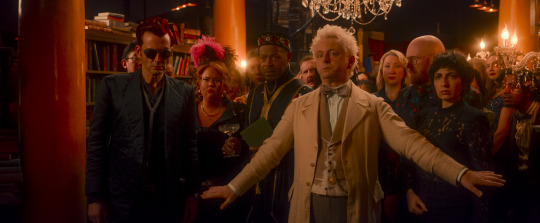
Good Omens 2 was shot on the Alexa LF, paired with Zeiss Supremes for the present-day scenes.
The minisodes were also given various levels of film grain to set them apart from the present-day scenes. Finney first experimented with this with the show’s DIT Donald MacSween using the DaVinci Resolve plugin FilmConvert. Taking that as a starting point, the show’s colourist, Company 3’s Gareth Spensley, then crafted his own film emulation inspired by two-strip Technicolor. “There was a lot of testing in the grade to find the look for these minisodes, with different amounts of grain and different types of either Technicolor three-strip or two-strip,” Finney recalls. “Then we’d add grain and film weave on that, then on top we added film flares. In the Biblical scenes we added more dust and motes in the air.”
Establishing the show’s lighting was a key part of Finney’s testing process, working closely with gaffer Scott Napier and drawing upon PKE Lighting’s inventory. Good Omens’ new Scottish location posed an initial challenge: as the studio was in an old warehouse rather than being purpose-built for filming, its ceilings weren’t as high as one would normally expect. This meant Finney and Napier had to work out a low-profile way of putting in a lot of fixtures.
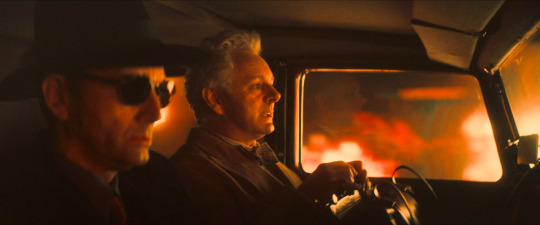
Inside Crowley’s treasured Bentley.
Their first task was to test various textiles, LED wash lights and different weight loadings, to establish what they were working with for the street exteriors. “We worked out that what was needed were 12 SkyPanels per 20’x20’ silk, so each one was a block of 20’x20’, then we scaled that up,” Finney recalls. “I wanted a very seamless sky, so I used full grid cloth which made it very, very smooth. That was important because we’ve got lots of cars constantly driving around the set and the sloped windscreens reflect the ceiling. So we had to have seamless textiles – PKE had to source around 12,000 feet of textiles so that we could put them together, so the reflections in the windscreens of the cars just showed white gridcloth rather than lots of stage lights. We then drove the car around the set to test it from different angles.”
On the floor, they mostly worked with LEDs, providing huge energy and cost savings for the production. Astera’s Titan Tubes came in handy for a fun flashback scene with John Hamm’s character Gabriel. The DP remembers: “[Gabriel] was travelling down a 30-foot feather tunnel. We built a feather tunnel on the stage and wrapped it in a ring of Astera tubes, which were then programmed by dimmer op Jon Towler to animate, pulse and change different colours. Each part of Gabriel’s journey through his consciousness has a different colour to it.”
Among the rigs built was a 20-strong Creamsource Vortex setup for the graveyard scene in the “Body Snatchers” minisode, shot in Stirling. “We took all the yokes off each light then put them on a custom-made aluminium rig so we could have them very close. We put them up on a big telehandler on a hill that gave me a soft mood light, which was very adjustable, windproof and rainproof.”

Shooting on the VP stage for the birth of the universe scenes in episode one.
Sky’s the limit
A lot of weather effects were done in camera – including lightning effects pulsed in that allowed both direct fork lightning and sheet lightning to spread down the streets. In the grade, colourist Spensley was also able to work his creative magic on the show’s skies. “Gareth is a very artistic colourist – he’s a genius at changing skies,” Finney says. “Often in the UK you get these very boring, flat skies, but he’s got a library of dramatic skies that you can drop in. That would usually be done by VFX, but he’s got the ability to do it in Baselight, so a flat sky suddenly becomes a glorious sunset.”
Finney emphasises that the grade is a very involved process for a series like Good Omens, especially with its VFX-heavy nature. “This means VFX sequences often need extra work when it comes back into the timeline,” says the DP. “So, we often add camera movement or camera shake to crank the image up a bit. Having a colourist like Gareth is central to a big show like Good Omens, to bring all the different visual elements together and to make it seamless. It’s quite a long grade process but it’s worth its weight in gold.”


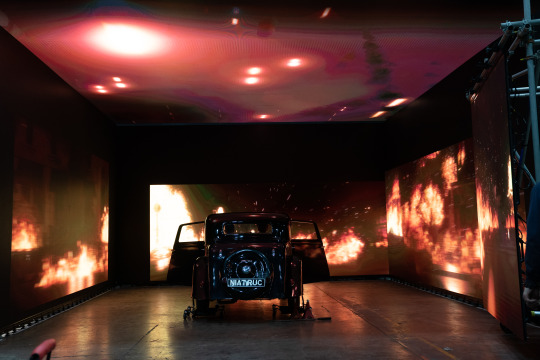
Shooting in the VR cube for the blitz scenes .
Finney took advantage of virtual production (VP) technology for the driving scenes in Crowley’s classic Bentley. The volume was built on their Scottish set: a 4x7m cube with a roof that could go up and down on motorised winches as needed. “We pulled the cars in and out on skates – they went up on little jacks, which you could then rotate and move the car around within the volume,” he explains. “We had two floating screens that we could move around to fill in and use as additional source lighting. Then we had generated plates – either CGI or real location plates –projected 360º around the car. Sometimes we used the volume in-camera but if we needed to do more work downstream; we’d use a green screen frustum.” Universal Pixels collaborated with Finney to supply in-camera VFX expertise, crew and technical equipment for the in-vehicle driving sequences and rear projection for the crucial car shots.

John Hamm was suspended in the middle of this lighting rig and superimposed into the feather tunnel.
Interestingly, while shooting at a VP stage in Leith, the team also used the volume as a huge, animated light source in its own right – a new technique for Finney. “We had the camera pointing away from [the volume] so the screen provided this massive, IMAX-sized light effect for the actors. We had a simple animation of the expanding universe projected onto the screen so the actors could actually see it, and it gave me the animated light back on the actors.”
Bringing such esteemed authors’ imaginations to the screen is no small task, but Finney was proud to helped bring Crowley and Aziraphale’s adventures to life once again. He adds: “What’s nice about Good Omens, especially when there’s so much bad news in the world, is that it’s a good news show. It’s a very funny show. It’s also about good and evil, love and doing the right thing, people getting together irrespective of backgrounds. It’s a hopeful message, and I think that that’s what we all need.”
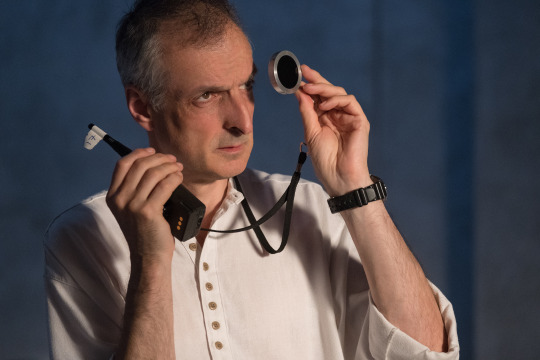
Finney is no stranger to the idiosyncratic world of Sir Terry Pratchett and Neil Gaiman.
#good omens#gos2#season 2#interview#gavin finney#neil gaiman#terry pratchett#gavin finney interview interview#s2 interview#bts#fun fact#british cinematographer#british cinematographer 2023#jon hamm#2ep1#2ep2#2ep3#2ep4#2ep6#2i1i1#job's minisode#1941 minisode#1827 minisode#2i6i7#bentley
2K notes
·
View notes
Text




FV4005 "Spud" restored to running condition by the Bovington Tank Museum thanks to donations. They plan to restore a M47 next.
26 notes
·
View notes
Text

On this day:
FROZEN FROGS FALL
On June 16, 1882, hailstones and pieces of ice splattered down at Dubuque, Iowa. Monthly Weather Review reported, "The foreman of the Novelty Iron Works, of this city, states that in two large hailstones melted by him were found small living frogs." Many other ice chunks also contained living frogs. The chunks were between one inch and seventeen inches around the middle. A few of the pieces were only half an inch in length, and others were the size of a baseball. The biggest icicle weighed nearly two pounds. Weathermen were puzzled. It was noted that the objects were not technically hailstones, but a conglomerate of large hailstones that presented a knobby kind of appearance. Such pieces of hail could have been created only if the ice had floated or hovered somewhere in order to establish the crystallization. The weatherman couldn't explain how the frogs came to be in the hailstones.
In 1864, in Pontiac, Canada, falling pieces of ice between half an inch and two and a half inches in diameter were found to contain small green frogs. The most extreme case of an animal enclosed in ice falling from the sky was recorded in Bovington, Mississippi. A six-by-eight-inch gopher turtle dropped from the sky during a hailstorm. It was entirely encased in ice.
Text from: Almanac of the Infamous, the Incredible, and the Ignored by Juanita Rose Violins, published by Weiser Books, 2009
24 notes
·
View notes
Text
every now and then i get to thinking "you kno, battlemechs arent really that heavy all things considered" because like the m1 abrahms is nearly 67 tons. thats just a little lighter than the upper end of the heavy mech range. but then i also remember an anecdote i think i heard from Bovington tank museum or something about how the abrahms can barely be towed by the recovery vehicles designed specifically to tow it because its become so damn heavy and sometimes need two... so maybe 67 tons IS on the heavy side
29 notes
·
View notes
Note
Autistic plural culture is kicking your feet and giggling cos you got tank slippers for Christmas and tanks are your special interest (the Sherman Fury from the bovington tank museum, if anyone cares)~♟️
.
#endos dni#osdd#pdid#did#did system#pdid system#osddid#actually did#traumagenic#actually dissociative#plural culture is#autism
20 notes
·
View notes
Photo

Bovington Stadium
132 notes
·
View notes
Note
Trick or Treat? 🦇
I'll do one trick and one treat for you, since you sent me 2. :)
First I'll do the trick since I know exactly what I want to do for the trick.
Have an old drawing I did of my triplets on Halloween:

#my art#writer games#writeblr games#asks#my ask#my friends#pluttskutt#pluberry pie#my ocs#jas#jasmine#jasmine bovington#marc#marcus bovington#trick or treat writer edition
3 notes
·
View notes










